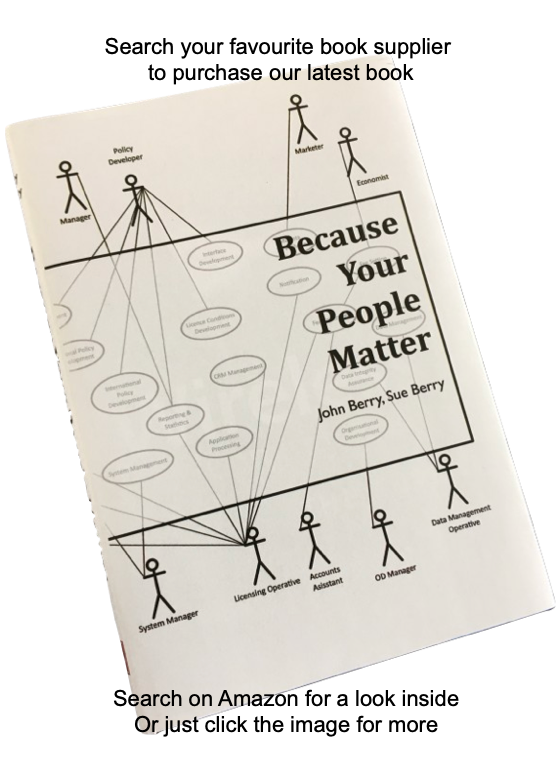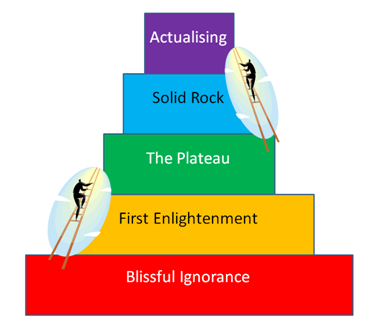The SME Human Resource Maturity Model: Taking HR seriously
The SME Human Resource Maturity Model: Taking HR seriously
Written by Sue Berry on 4th May 2017. Revised 25th March 2020.
5 min read
Developing the model
Research indicates that there is a strong link between employee performance and the presence of a positive employee-employer relationship. This comes directly from sound human resource strategy which supports, and indeed forms an integral part of the business strategy. Watson-Wyatt (2000)[1] in particular shows that by embracing and excelling in human resources, companies can add significantly to the bottom line. Based on this research the author devised an “HR Maturity Ladder” against which companies can measure themselves, and consequently set targets for improvement. The model is shown in Figure 1.
This model shows five steps with movement proposed between the lowest and eventually the highest level. The higher up the Ladder the firm works its HR, the more it adds to profit.

The following paragraphs describe each of the levels of the model. They explain the facets of the firm or organisation, describing to what extent it uses good HR practice.
Blissful Ignorance
 At this level human resource management is not at the forefront of the principal’s thoughts. Someone in the organisation, perhaps a secretary or office assistant, keeps some basic personnel records. There is very little training or staff development; no job descriptions; no process of staff appraisal and in some cases no contracts of employment. The organisation has no knowledge of the benefits of human resource practices. Where problems occur they may well be resolved by using the services of a lawyer.
At this level human resource management is not at the forefront of the principal’s thoughts. Someone in the organisation, perhaps a secretary or office assistant, keeps some basic personnel records. There is very little training or staff development; no job descriptions; no process of staff appraisal and in some cases no contracts of employment. The organisation has no knowledge of the benefits of human resource practices. Where problems occur they may well be resolved by using the services of a lawyer.
First Enlightenment
This occurs when the principal realises that there is some benefit to be had. The business strategy begins to include elements of HR strategy such as statements about training and style of staff and their competences. Consideration is given to matching employee benefits to the local environment. Staff do have basic of terms and conditions of employment.
Plateau
The principal now realises that the recruitment, retention and training of good staff is beneficial to the organisation. Policies and procedures begin to be developed and performance appraisals occur in an attempt to review training needs. Training becomes important and staff begin to feel valued and needed.
Solid as a Rock
The company strives for ISO9000 and Investors in People because these are seen as beneficial to the organisation. A wide selection of HR tools are in place. The company is offering competitive packages to attract and retain staff and recruitment poses no problem. Staff have personal development plans, annual appraisals and are encouraged to undertake training. There is consistent positive feedback from customers and the profits increase as a direct result of effective HR policies.
Self-Actualisation
Reaching this level is not commonplace. It reflects good practice where HR strategy and business strategy are developed as one. Employees and managers share a common vision with staff truly believing they work for the best organisation possible. Customers view the organisation as truly excellent. The growth of turnover, profits and people occur together.
Using the model
This model can be used independently by firms as a basic tool to identify to the extent to which management embraces good HR practices. To use the Ladder, simply read the descriptions and see which best fits the way your firm works its HR. It’s a self assessment and you need to be honest. Then decide the level on the HR Maturity Ladder you want to reach and over what time. You now have two of the parts of your future plan. You just need to develop a set of actions for how to promote yourself between the levels. Figure 2 below shows the levels as a pyramid. The areas of each block or step represent relative numbers of UK firms that are at each of the levels. More firms are at the lowest level. The highest level has the fewest firms.

Reaching the self-actualising level is not commonplace. It reflects the best of good management where development of HR practice and the overall strategy are one. Employees and management share a common vision and staff readily agree that they work for the best organisation ever. Customers view the company as truly excellent and growth of turnover, profits and people occur in harmony.
Reaching the Plateau should really be every firms aim. It represents the most basic of HR levels. Unfortunately, as the name suggests, this is where most organisations remain. Firms that have ISO9001 and embrace quality principles (as opposed to following that standard for some marketing reason) will find it straightforward to get to the Solid-as-a-Rock level.
HR maturity model
Excellence in HR requires:
- the right human resource strategy in support of the business strategy
- bringing the right people on board
- entering clear, fair and legally binding terms and conditions of employment
- retaining key staff
- empowering staff, enabling them to work with minimum supervision
- training staff and managers to ensure both develop competencies and knowledge
- communicating effectively
- handling sensitive issues such as redundancy compassionately and equitably.
This paper provides a model which firms (and indeed all organisations) can use to facilitate the development of an integrated business and HR strategy.
Note that this paper gives no quantitative measures of the benefits available following promotion up the HR Maturity Ladder. See other TimelessTime publications for details of the relationship between excellence in HR and bottom line performance increases.
- Watson Wyatt (2000) The human capital index: European survey report 2000, Watson Wyatt, Reigate